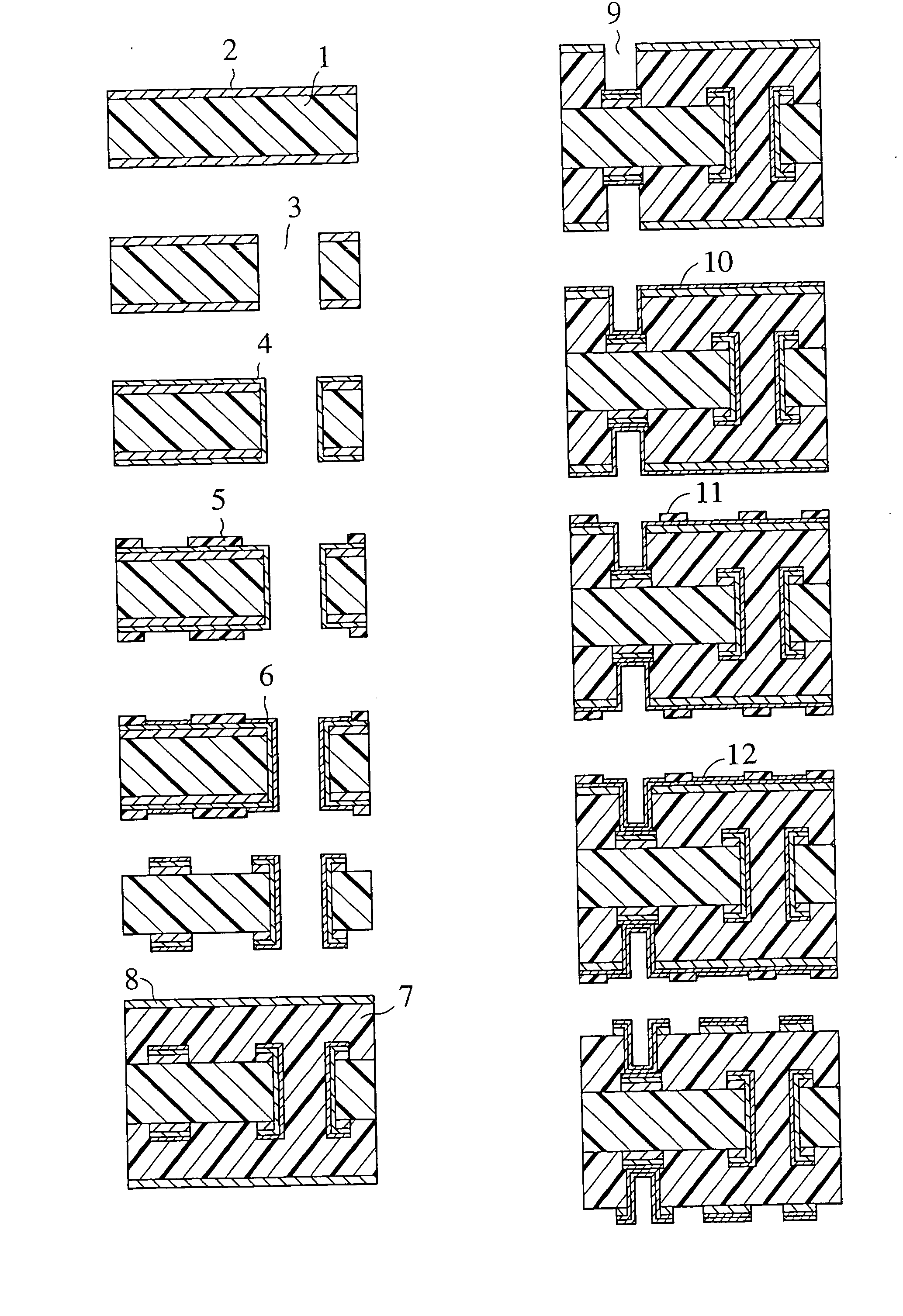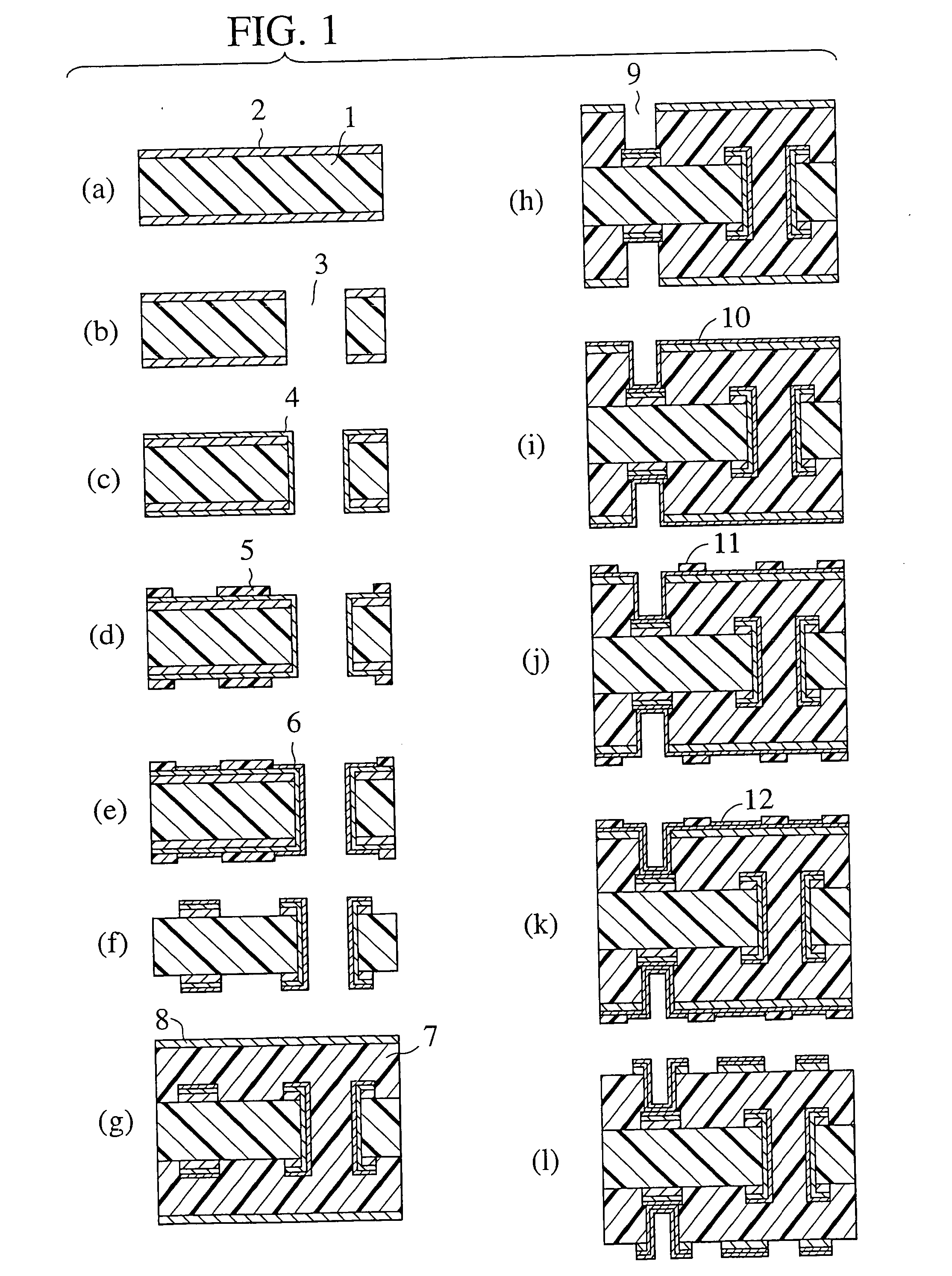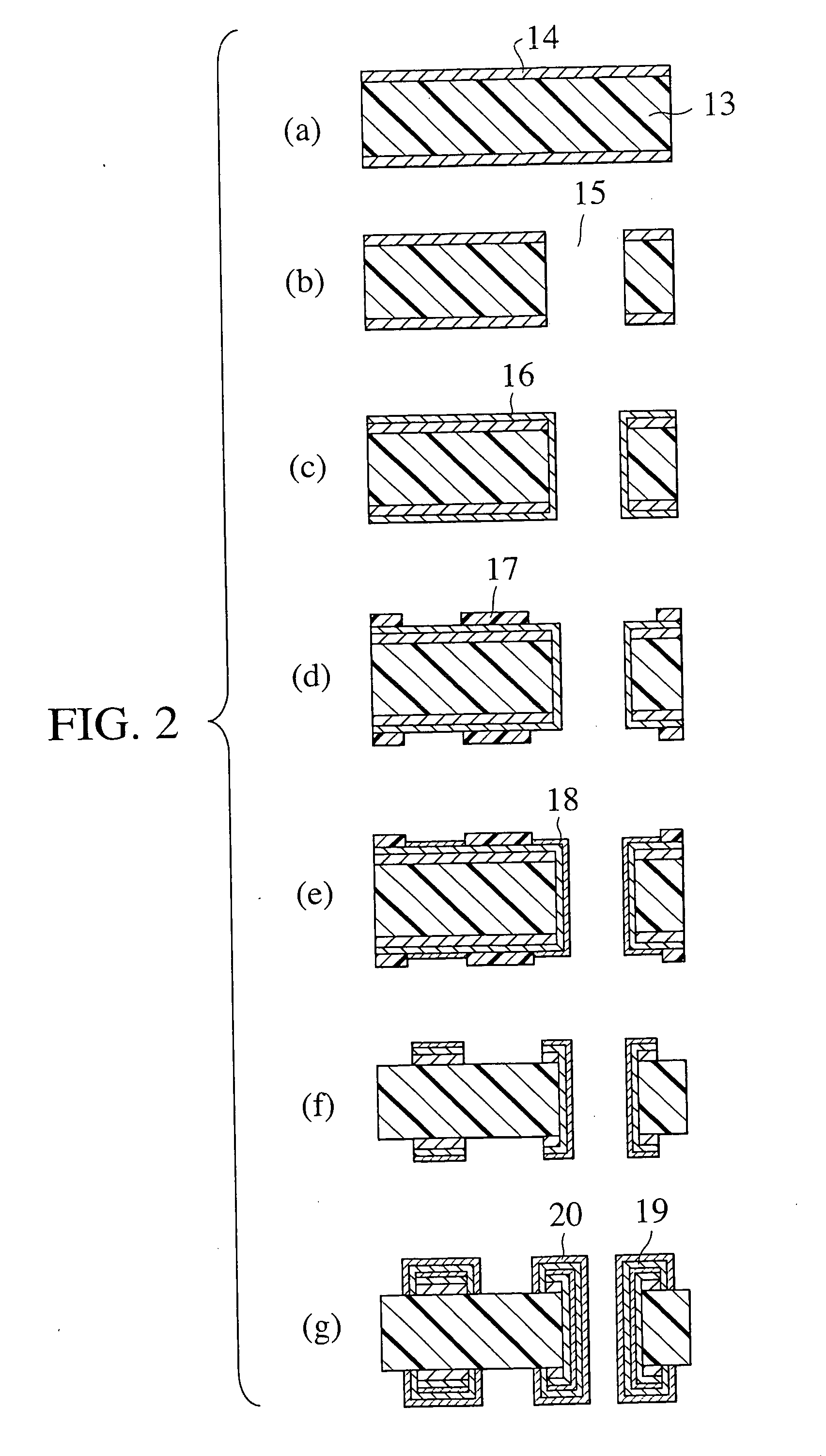Metal foil with resin and metal-clad laminate, and printed wiring board using the same and method for production thereof
a technology of metal clad laminates and metal foils, which is applied in the direction of metal layered products, metallic material coating processes, synthetic resin layered products, etc., can solve the problems of short-circuit failure, large transmission loss, and obstruct the thinning of metal foils, and achieve high reliability and circuit formability, low cost efficiency and handling
- Summary
- Abstract
- Description
- Claims
- Application Information
AI Technical Summary
Benefits of technology
Problems solved by technology
Method used
Image
Examples
example 1
[0147] The varnish of the insulating resin composition 1 was impregnated into glass cloth (basic weight 210 g / m2) having the thickness of 0.2 mm and dried at 120° C. for 5 minutes to obtain the prepreg. The four prepregs and two pieces of the metal foil 1 were laminated while each one piece of the metal foil 1 was located at the top and the bottom. The prepreg and the metal foil were press-formed for one hour on the conditions of 170° C. and 2.45 MPa, and the carrier copper foil was peeled to manufacture the copper clad laminate including an insulating layer 13 and copper foil 14 as shown in FIG. 2(a).
[0148] As shown in FIG. 2(b), a through hole 15 having the diameter of 80 μm was made from above the metal foil with a carbon dioxide gas impact laser punching machine L-500 (product name, Sumitomo Heavy Industries, Ltd.), and a smear was removed by dipping the copper clad laminate into mixed aqueous solution of potassium permanganate of 65 g / L and sodium hydroxide of 40 g / L at a solu...
example 2
[0154] The varnish of the insulating resin composition 1 was impregnated into glass cloth (basic weight 210 g / m2) having the thickness of 0.2 mm and dried at 120° C. for 5 minutes to obtain the prepreg. The substrate was produced in a manner similar to EXAMPLE 1 except that the four prepregs and two pieces of the metal foil 2 were laminated while each one piece of the metal foil 2 was located at the top and the bottom and press-formed for one hour on the conditions of 170° C. and 2.45 MPa to manufacture the copper clad laminate shown in FIG. 2(a).
example 3
[0155] The varnish of the insulating resin composition 2 was impregnated into glass cloth (basic weight 210 g / m2) having the thickness of 0.2 mm and dried at 160° C. for 5 minutes to obtain the prepreg. The substrate was produced in a manner similar to EXAMPLE 1 except that the four prepregs and two pieces of the metal foil 2 were laminated while each one piece of the metal foil 2 was located at the top and the bottom and press-formed for one hour on the conditions of 170° C. and 2.45 MPa to manufacture the copper clad laminate shown in FIG. 2(a).
PUM
| Property | Measurement | Unit |
|---|---|---|
| Temperature | aaaaa | aaaaa |
| Time | aaaaa | aaaaa |
| Thickness | aaaaa | aaaaa |
Abstract
Description
Claims
Application Information
 Login to View More
Login to View More - R&D
- Intellectual Property
- Life Sciences
- Materials
- Tech Scout
- Unparalleled Data Quality
- Higher Quality Content
- 60% Fewer Hallucinations
Browse by: Latest US Patents, China's latest patents, Technical Efficacy Thesaurus, Application Domain, Technology Topic, Popular Technical Reports.
© 2025 PatSnap. All rights reserved.Legal|Privacy policy|Modern Slavery Act Transparency Statement|Sitemap|About US| Contact US: help@patsnap.com



